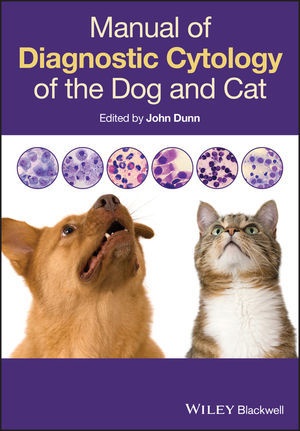Read more
In den letzten Jahren sind Lese- und Rechtschreibschwierigkeiten bei Kindern im Grundschulalter in zunehmendem Masse als Problem identifiziert worden. Eine Aussage über die Haufigkeit zu treffen ist ohne Bezugnahme auf operationalisierte Kriterien schwierig. Man geht jedoch davon aus, dass ca. 10-15% der deutschen Grundschulkinder deutliche Schwierigkeiten beim Lesen und Schreiben haben.1 Bedenkt man, dass z.B. die Stadt Heidelberg die Folgekosten von Therapie- und Fordermassnahmen für lese- und rechtschreibschwache Kinder kaum noch tragen kann und deshalb verstarkt bereits in Kindergarten und Vorschule auf Praventionsmassnahmen setzt, wird die Tragweite des Problems Lese- und Rechtschreibschwache bei Kindern bewusst.2 Seit einigen Jahren greifen Lehrer und Therapeuten als Erganzung zu konventionellen Fordermassnahmen im Rahmen der Gruppen- oder Einzelforderung vermehrt auf Lernsoftware zum Lesen und Schreiben zurück. Auch die Eltern sind bemüht, durch den Einsatz dieser Programme ihre moglicherweise betroffenen Kinder zu fordern, bzw. die Software als Praventivmassnahme einzusetzen. Dementsprechend unübersichtlich ist der Markt für diese Programme inzwischen geworden und die Grundlagen, auf denen die dort angebotenen Übungen basieren, ebenso wie deren Qualitat oder Erfolgsgarantie, bleiben oft fragwürdig.3 Auf der Seite der Forschung hat die Psycholinguistik in jüngerer Zeit ihre Erkenntnisse und Modelle zum Lesen und Schreiben, zum Schriftspracherwerb und somit auch zur Emittlung von Ursachen für Lese-Rechtschreibschwache stetig erweitert. Die Frage nach der tatsachlichen Wirksamkeit solcher Fordersoftware kann im Rahmen dieser Arbeit zwar nicht geklart werden, vielmehr unternimmt sie den Versuch, drei exemplarisch ausgesuchte Software-Programme auf Basis dieser psycholinguistischen Erkenntnisse zu beleuchten, um deren theoretisches Fundament abzuklopfen. [...] 1 KLICPERA & GASTEIGER-KLICPERA (1995, 227-228) 2 http://www.ph-heidelberg.de/wp/schoeler/EVES_Nr1.pdf/ 3 Einen Überblick über neue Medien im Unterricht versucht die Datenbank SODIS http://www.sodis.de/ zu geben. Hier im speziellen http://www.leu.bw.schule.de/allg/mmsoft/index.htm/...
List of contents
Contributors
Preface
Editor's Note
1 Cytological Collection Techniques and Sample Preparation
Natali Bauer
2 General Principles of Cytological Interpretation
Kathleen Tennant
3 Cytology of the Lymphoid Tissues
Erik Teske
4 Cytology of Cutaneous and Subcutaneous Lesions
John Dunn
5 Cytology of the Respiratory Tract
John Dunn
6 Biochemical and Cytological Examination of Body Cavity Effusions
Emma Dewhurst and Niki Skeldon
7 Cytology of Synovial Fluid
Kate Sherry
8 Biochemical and Cytological Examination of Cerebrospinal Fluid
Kate English and Holger Volk
9 Cytology of the Eye and Adnexal Structures
Roger Powell and David Gould
10 Cytology of the Urinary Tract
Joy Archer
11 Cytology of the Liver, Exocrine Pancreas and Gastrointestinal Tract
Marta Costa and Kostas Papasouliotis
12 Cytological Examination of the Endocrine Glands
Walter Bertazzolo
13 Cytology of the Male and Female Genital Tracts
Gary C.W. England and Kristen R. Friedrichs
14 Cytology of Mammary Gland Lesions
Reinhard Mischke
15 Cytology of Selected Infectious Organisms
Harold Tvedten
Further Reading
Index
About the author
John Dunn BVM&S MVetSci MA DSAM DipECVIM DipECVCP FRCPath MRCVS
John is a Senior Clinical Pathologist at Axiom Veterinary Laboratories, UK, having previously spent 15 years as a lecturer in Small Animal Medicine and Clinical Pathology at the University of Cambridge Veterinary School. He is a Diplomate of both the European College of Veterinary Internal Medicine (Companion Animals) and the European College of Veterinary Clinical Pathology, and is a Fellow of the Royal College of Pathologists.
Summary
* A quick reference manual for the busy veterinarian in first opinion practice, helping save both time and money on referral of samples to diagnostic labs. * Describes techniques for obtaining good quality cytological specimens, and guides the reader through the interpretation of cytological findings.
Report
"This book will serve as an excellent resource for small animal veterinarians who are seeking a reference with useful information on the acquisition and interpretation of cytologic samples." (Journal of the American Veterinary Medical Association, 15 September 2014)
"This is a nice book that will provide valuable information for veterinarians obtaining samples and performing in-house cytology." (Doody's, 5 September 2014)
"If you are keen to develop your skills in diagnostic cytology, I would definitely consider buying this book." (European Journal of Companion Animal Practice, 1 July 2014)

